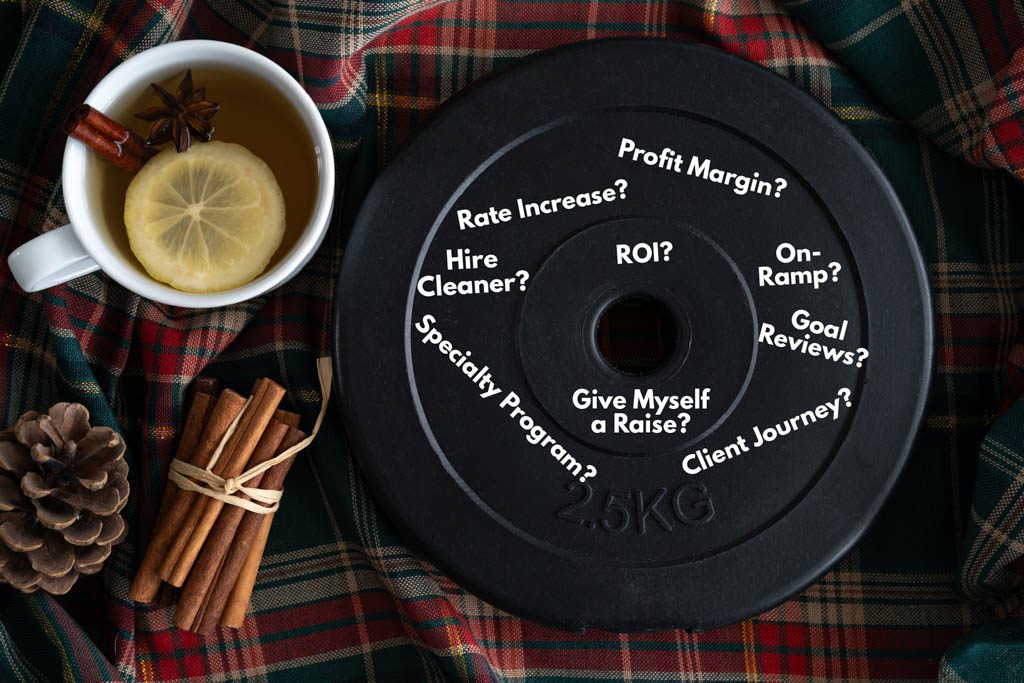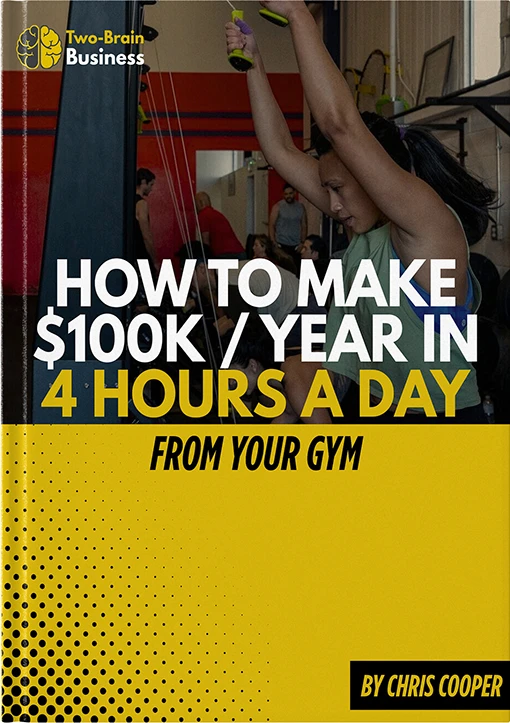Let’s get right down to business now that fall is here.
I want you to end 2025 with improved metrics and massive momentum for 2026.
Here’s exactly how we’ll do it:
- I’ll lay out the six metrics that really move the needle for gym owners.
- I’ll reference our 2024 “State of the Industry” report—the largest data set in the fitness world—and tell you exactly what numbers earn you a C grade.
- I’ll give you tactics you can use today to beat those numbers and get an A.
Remember, if you don’t have any numbers at all, you can’t evaluate your business. You must have data if you want to succeed as a fitness entrepreneur—and Two-Brain can help you learn to track and improve these critical numbers.
1. Average Revenue per Member (ARM)
ARM is the clearest measure of the value your clients place on your service. Across 15,000 gyms who contributed to our 2024 report, here’s the benchmark for a C grade:
- Large-group gyms: US$167.76 per member per month.
- Small-group gyms: $230.18.
- One-on-one studios: $353.37.
If your ARM needs improvement, here’s how to raise it:
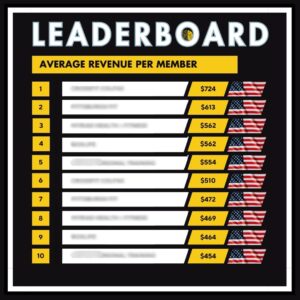
1. Add an On-Ramp—Don’t throw new people into classes cold. A structured onboarding process raises ARM and boosts retention.
2. Run Specialty Programs—Test quarterly offerings such as a legends program (for clients 60+), nutrition challenges or sport-specific training.
3. Increase Rates—This can be hard but is often necessary. Most gyms can handle a 15 percent increase without excessive churn, and that revenue goes straight to the bottom line. (A mentor can help you calculate the increase you need and walk you through the exact rollout steps so you retain your clients.)
A+: Two-Brain’s top gyms have ARM scores from $450 to $700-plus.
2. Length of Engagement (LEG)
If clients don’t stay at least two years, you’re not changing lives.
- Average retention in big-group gyms in the U.S.: 18 months.
- Personal training gyms do better—often three years plus.
Here’s how to improve LEG:
1. Add on On-Ramp (Yes, I’m saying this again)—Use a free consultation, not a free trial, to sell and then feed new members into a high-touch integration program with a ton of support. An on-ramp is a barrier to exit, not entry.
2. Map the First 90 Days of the Client Journey—Plan every step: welcomes, texts, skill teaching, goal reviews, etc. Affirm their purchase, acclimate them and celebrate them.
3. Quarterly Goal Reviews—Measure what they care about, not what you care about. Use these sessions to prescribe the next step—and ask for referrals.
A+: 25 months or more.
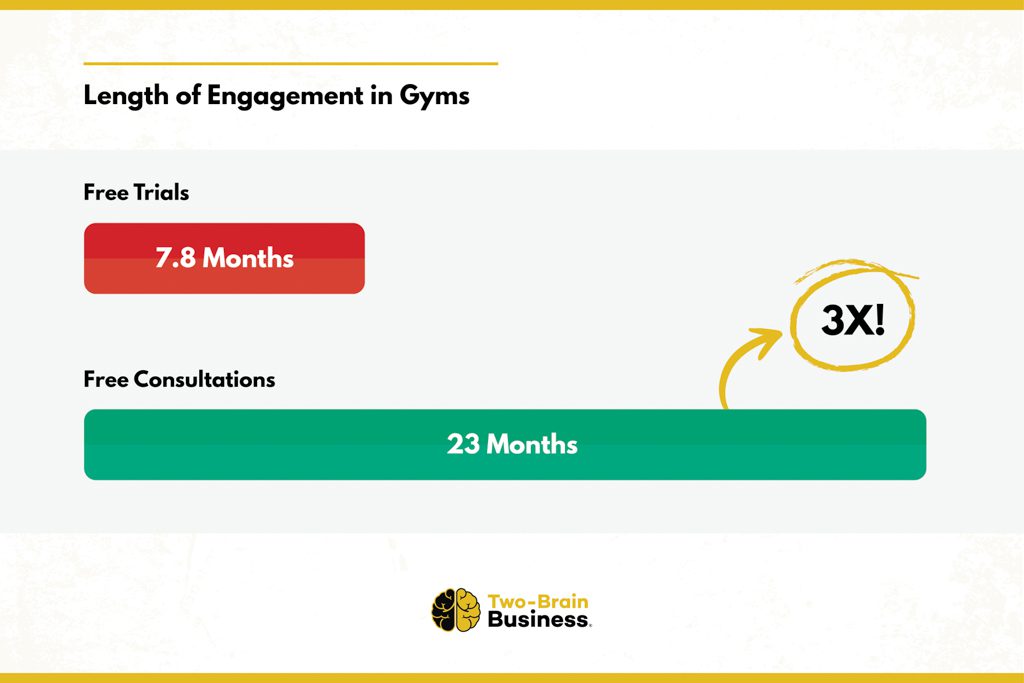
3. Return on Investment (ROI)
Every dollar that doesn’t go into your pocket or to the tax collector is an investment. Staff, rent, software—everything should make money for you. The average gym spends:
- 33 percent of gross revenue on staff.
- 47 percent of gross revenue on fixed expenses.
That’s 80 cents of every dollar going right back out the door, which doesn’t leave a lot for you.
To improve ROI:
1. Do an Expense Audit—Find out where every dollar goes, and then ask each provider, “How can I get a better return on my investment in your service?”
2. Cut and Consolidate—Remove waste to improve cash flow. For example, you could get rid of three software subscriptions and save money with an all-in-one solution like Kilo. Or you might extend a loan term to reduce the drain on your cash.
3. Sublease or Repurpose Space—Rent unused rooms to other professionals or convert them into PT or sales offices—rooms that make money for the business.
A+: Two-Brain gyms work toward a profit margin of 33 percent or better.
4. Effective Hourly Rate (EHR)
Here’s the hard truth: many gym owners make less than their coaches.
- Average gym owner’s hourly rate: $25.
If you’d make more money coaching somewhere else, you’re not doing CEO work.
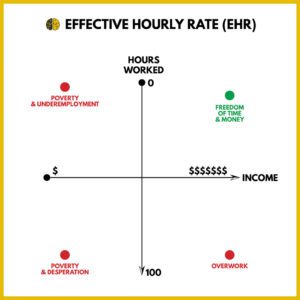
Fix it like this:
1. Schedule a Golden Hour—This is one focused hour daily for sales and marketing. No email, no social media. You’re going to set aside time to grow your business before you do anything else.
2. Buy Back Time—Hire out tasks from low value to high value (cleaning ranks lower than coaching, for example). Use the freed hours to focus on growth activities as the CEO.
3. Systemize and Step Back—Cut your hours in the gym and build systems so it runs without you. You will have to audit, repair and improve these systems, but doing this will greatly increase your freedom.
A+: Top gym owners hit $46 or more.
5. Net Owner Benefit (NOB)
This is the money you actually take home.
- Median for big-group gyms: $4,000 a month.

Here are three steps to improve NOB:
1. Pay Yourself First—Automate a weekly paycheck. Profit First is a simple framework that works.
2. Automate Raises—Try to add 5-10% every quarter. Build the habit of increasing your income.
3. Improve Profitability—Follow the steps above: Improve ARM, boost LEG, control expenses, and buy back time. Each action will put more money in your pocket.
A+: Top gym owners earn $20,000 or more each month.
6. Clients
Most gym owners think getting more clients will solve everything.
❌ Wrong. More clients often just break a poorly running machine faster.
Fewer than 5% of gyms worldwide hit 300 clients—it is not a good first target.
- The average coaching gym has 122.5 members.
The sweet spot to start is 150 of the right clients paying the right rates and staying for years. If you get 150 clients, your ARM is $205 or more, your LEG is solid and you control expenses, you can make $100,000 a year.
Once you’ve built a well-run, systemized business that can serve 150 clients, you can add more if you want to.
We’ll dive deep into client acquisition in another post, where I’ll lay out the four funnels we teach at Two-Brain.
A+: I won’t give you a number. Some Two-Brain gyms have hundreds and hundreds of clients. Others have 150. Still others have 70. The number is only important as it relates to your business model—a mentor can help you determine the A+ number for your business.
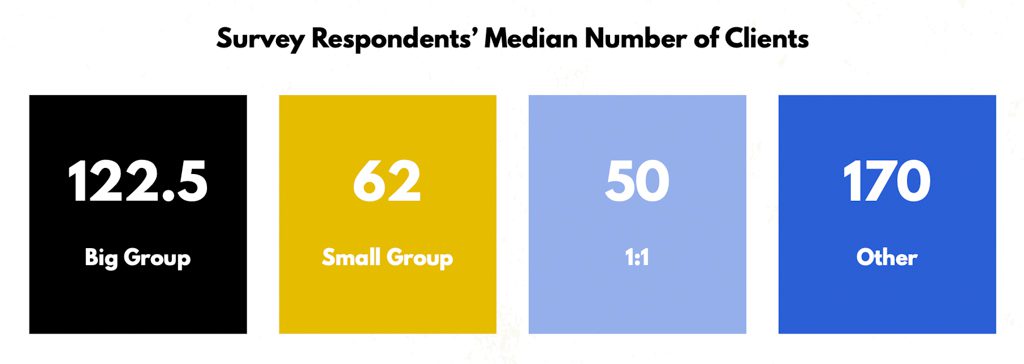
Final Thoughts
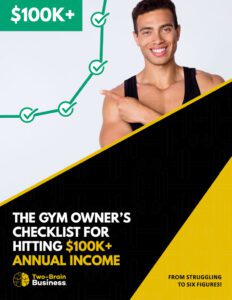
When someone asks how your is gym doing, you should be able to answer with data: “Our retention is strong, but ARM needs work. I’m focusing on X to improve that number right now.”
Or, “ROI is tight, but NOB is rising because I’m doing Y.”
Data shows you the way forward, and these six metrics are the most important numbers in a fitness business. Track them and improve them and you’ll build a profitable gym that serves your family, as well as your staff and clients.
Now: Pick one metric from the list above, then select the easiest action I listed to improve it. Execute this week.
Then repeat that process for years.
And if you want a mentor to analyze your business and tell you exactly what to do to improve it fast, book a call here.
